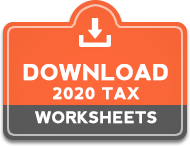
Commentary on the Federal Budget 2019
March 23, 2019
Consulting Services Edmonton
April 10, 2019TAX TICKLERS… some quick points to consider…
- The annual TFSA contribution limit for 2019 will be increased to $6,000 (from $5,500) due to indexation. For those who have been eligible to build contribution room since inception of the program in 2009 and have never contributed, the total maximum room as of January 1, 2019 is $63,500.
- For 2019, the Employment Insurance premium rate is reduced to 1.62% (from 1.66%). The maximum insurable earnings is $53,100 (from $51,700), resulting in a maximum employee premium of $860 (a net increase of $2) and maximum employer premium of $1,204 (a net increase of $3).
- Registered charities will now be able to pursue their charitable purpose by engaging in non-partisan political activities in the development of public policy without limitation. These rule charges are largely retroactive to January 1, 2008. Previously, a registered charity must have limited their non-partisan political activities to 10% of their resources.
- CRA recently opined that investment management fees in respect of tax-sheltered accounts (like RRSPs, RRIFs and TFSAs) paid outside of the account (e.g. management fees charged to a non-registered account), would be subject to a 100% advantage tax. That is, a tax equal to the full value of the management fee would be levied. It was recently announced that the implementation date of this policy was extended indefinitely until a review had been completed.
CHILDCARE COSTS: Art, Sport and Educational Camps
A September 11, 2018 Tax Court of Canada case examined the eligibility of a number of child care costs with a recreational and educational component. The taxpayer and his spouse worked full time and had two children, aged 10 and 12.
The Court acknowledged two separate lines of cases related to eligibility of child care expenses (all informal and, therefore, not binding on CRA).
The first set, argues that the definition of a “child care expense” is restrictive such that recreational or educational activities do not qualify. The reasoning is that expenses to develop the physical, social and artistic abilities of the child would have been incurred whether or not the parents had been working.
The second line of cases requires that one evaluate whether the purpose of the expense was to allow the parent(s) to work. A bona fide expense would not be denied solely because the activity was recreational or educational in nature.
Taxpayer Wins, Mostly
The Court accepted the second set of cases as guidance, noting that if Parliament had intended to limit such activities, it would have said so in more specific and restrictive language. As such, the Court accepted the majority of the taxpayer’s child care expenses that contained a recreational and educational component.
Parental Discretion
The Court found that the taxpayer’s decision to engage university students, who were paid $5/hour more than what was paid to high school students, was irrelevant as “it is not for the state to decide who minds the appellant’s children as long as the expenses are reasonable.” In other words, it is the parents that are responsible for choosing who they wish to use, and they do so, based on the child’s needs; this choice is an exercise of parental discretion.
The Minister also suggested that the child who was 12 years of age in the year may not have needed some of these expenditures due to his age, to which the Court responded that Parliament grants child care expenses for eligible children up to age 16 – it is up to the parent to decide whether a child 12 or older should stay home alone.
Limitations
Costs related to activities on a Saturday, and during school hours, were denied as they did not facilitate the taxpayers’ ability to work. Amounts related to camp were limited to a weekly amount of $125 (as the child was over 7), as specifically provided for in the Income Tax Act. Camp costs for children under 7 are limited to a weekly amount of $200. A higher amount may be available for those with a disability.
CRA Administrative Policy
As this case was informal, it is not precedential. While it may provide a filing position, CRA may still challenge these types of child care expenses. CRA’s webpage continues to state that fees for leisure or recreational activities, and fees related to education costs, cannot be claimed as a child care expense.
ACTION ITEM: If incurring child care costs with a recreational or educational component, consideration may be given to claiming these amounts as a child care expense, up to the maximum allowed amount. That is, an annual amount of $8,000/child under 7, $5,000/child aged 7 to 16 and $11,000 for a disabled child.
TRAVEL EXPENSES:
Home to Work Site
Travel from home to a regular place of employment is usually a personal expenditure, the costs of which cannot be claimed as an employment expense. However, if the taxpayer is required to travel away from the employer’s place of business, amounts may be deductible by the employee.
A June 29, 2018 Tax Court of Canada case examined this issue. The taxpayer travelled from home to three different construction sites to carry on employment duties. Specifically, the taxpayer’s work for a Toronto construction corporation required frequent travel to sites requiring round trips of 167 km (Hamilton) and 92 km (Aurora), and infrequently to a site requiring a 94 km round trip (Whitby).
CRA argued that each was a regular place of employment, such that no deduction was available. The Court, however, concluded that this was travel “away from the employer’s place of business or in different places”, as required by the Income Tax Act. As such, the costs of this travel could qualify as deductible employment expenses.
While the taxpayer was not ultimately successful in his claim due to his receipt of an allowance from his employer, the case may provide a basis for business travel from home to a construction site.
As implied above, there are other conditions that must be met in order to deduct amounts against employment income. For example, the employee must not receive a non-taxable allowance in respect of the travel, and an appropriately completed T2200 from their employer must have been issued.
CAUTION ITEM: Although it may be possible deduct travel amounts against employment income, such amounts are often challenged by CRA.
HACKED CUSTOMER DATA: Federal Reporting Requirements
Recently, the Office of the Privacy Commissioner of Canada, provided details (see https://www.priv.gc.ca/en/privacy-topics/privacy-breaches/respond-to-a-privacy-breach-at-your-business/gd_pb_201810/) in respect of the new mandatory reporting requirements where breaches of security safeguards have occurred.
As of November 1, 2018, organizations subject to The Personal Information Protection and Electronic Documentation Act (PIPEDA), including small businesses, will be required to report breaches involving personal information that pose a “real risk of significant harm to individuals”, to the Privacy Commissioner of Canada. Also, standards for notification of affected individuals and retention of breach records must be followed.
Small businesses do not receive any particular exclusion or exception from the rules.
A “breach of security safeguards” is unauthorized access to, or unauthorized disclosure of, personal information resulting from a breach of an organization’s security safeguards, or from failure to establish safeguards. “Significant harm” includes bodily harm, humiliation, damage to reputation or relationships, loss of employment, business or professional opportunities, financial loss, identity theft, negative effects on credit records, and damage to or loss of property. The “real risk of significant harm” is determined in respect of the sensitivity of the personal information and the probability that it has been or will be misused.
Medical and income records are almost always considered sensitive, however, other information could also meet the definition.
When examining probability of misuse, one should consider the scope of information exposed, whether the breach was intentional, who likely has access to it, and how usable or protected that information was.
ACTION ITEM: Be prepared by reviewing protocol and obligations in respect of client information hacks and losses. Quick response can assist in rectifying the integrity of the data and the relationship with the client.
ACCELERATED DEPRECIATION: Federal Fall Economic Update Changes
In response to U.S. tax changes and cuts, the Federal Government released its Fall Economic Update on November 21, 2018 which primarily focused on changes to the first year of depreciation on most capital assets. The changes include immediate full depreciation in respect of manufacturing & processing assets, along with clean energy generation and storage assets. Also, an enhanced first year depreciation claim is now available for most other depreciable assets.
Manufacturing and Processing Machinery and Equipment
Machinery and equipment used in manufacturing and processing acquired and made available for use from November 21, 2018 to December 31, 2023 will be eligible for a full capital cost allowance (CCA) deduction in the year of acquisition (the full deduction will then be phased out incrementally). Specifically, the asset must be used directly or indirectly by the taxpayer in Canada primarily for the manufacturing or processing of goods for sale or lease, or leased by certain corporations to a lessee who can reasonably be expected to use the property in this manner.
In broad terms, the manufacture of goods normally involves the creation of something (e.g. making or assembling machines, clothing or soup) or the shaping, stamping or forming of an object of something (e.g. making steel rails, wire nails, rubber balls, or wood moulding).
Processing of goods usually refers to a uniform process, system, technique, or method of preparation, handling or other activity designed to effect a physical or chemical change in an article or substance (e.g. galvanizing iron, creosoting fence posts, dyeing cloth, dehydrating foods, or homogenizing and pasteurizing dairy products), other than natural growth. Jurisprudence has determined that a taxpayer would be engaged in processing if the following two tests are met: there is a change in the form, appearance, or other characteristics of the goods subject to the operation; and the product becomes more marketable.
Property “used directly or indirectly” in eligible activities may qualify for this enhanced deduction.
Some assets commonly used in smaller operations, such as restaurants, bars or bakeries, may qualify. For example, an oven which converts ingredients into a meal for sale may be considered used in manufacturing or processing.
Clean Energy Assets
Clean energy assets (Classes 43.1 and 43.2) will qualify for the same first year depreciation claims as manufacturing and processing equipment (100% up to December 31, 2023, declining thereafter). Eligible assets for these classes include certain types of energy and heat production and storage equipment related to hydro, wind, solar, bio fuel, eligible waste fuels, hydrogen fuel cells, kinetic wave/tidal, ground source heat pump systems and heat recovery equipment.
Most Other Capital Assets – Accelerated Investment Incentive
CCA also will be enhanced for acquisitions of depreciable assets in most other classes from November 21, 2018 to December 31, 2027.
Prior to the rule change, the half-year rule essentially only allowed half a year of depreciation in the year of acquisition (applicable to most CCA classes), regardless of how early or late in the fiscal year the asset was acquired. Now, for most assets, the usual half year of CCA available in the year of acquisition will be tripled for acquisitions to December 31, 2023 (the enhancement will decline thereafter, returning to the typical half-year rule in 2028).
For example, a Class 10 vehicle which is normally subject to a 15% depreciation claim in the first year would now be allowed a 45% claim.
Planning and Purchases
Claiming depreciation is optional. In essence, one has the option of claiming depreciation up to the maximum level available in respect of its class for any given year (other less common limits may also apply). The accelerated depreciation rules operate as the name implies: they accelerate when a tax deduction for depreciation can be claimed, but they do not increase the overall lifetime amounts that can be claimed. In other words, more can be claimed up front, but less will be available in the future. Note that an accelerated CCA claim in the year of acquisition is only available in that year – one must “use it or lose it”. Reducing the claim in the year of acquisition does not allow an accelerated deduction in a future year.
When determining whether, and to what extent a claim should be made, considerations vary depending on factors such as:
- whether the asset is owned personally or in a corporation;
- the current income levels, and the expected income in the future;
- future corporate tax rates (for example, whether the corporation may be subject to small business deduction restrictions as too much passive income is being earned); and
- whether the asset is generating passive or active income.
Accelerated depreciation is available even if purchased just before year’s end, as long as it is also made available for use by that point as well.
ACTION ITEM: Review whether capital purchases should be accelerated, and whether the accelerated deduction should be claimed given your particular situation.
FEDERAL CARBON TAX: Costs and Rebates
On October 23, 2018, draft amendments to the Federal Fuel Charge Regulations and the Greenhouse Gas Pricing Act were released. As of April 1, 2019, a federal carbon tax is scheduled to be imposed in respect of Ontario, New Brunswick, Manitoba, and Saskatchewan. The federal backstop legislation will be partially used in Prince Edward Island, Yukon, and Nunavut. The other provinces and territory are not subject to this regime as they have, or are, instituting their own custom carbon pricing structures.
In the first year, the federal tax will, for example, subject gasoline purchases to a 4.42 cents/L tax while 3.91 cents/cubic meter will be assessed on marketable natural gas. The rates will be increased annually until 2024.
According to a Government Backgrounder entitled “Ensuring Transparency” the direct proceeds from the federal carbon tax will be returned to the territory or province of origin. For the provinces subject to the federal carbon tax, approximately 90% of funds will be returned directly to individuals and families through a Climate Action Incentive (CAI) payment. The remainder will be returned through electricity generation support in remote communities; support for small and medium enterprises; and support for municipalities, universities, schools, colleges, hospitals, non-profit-organizations, and indigenous communities.
The following are sample published payout amounts and estimated costs for 2019.
| Province | Climate Action Incentive Payments ($) | Carbon Tax Cost ($) | ||||
| Family of 4 | Avg.
House-hold |
1st
Adult |
2nd Adult | Each Child | Avg. House-hold | |
| Ontario | 307 | 300 | 154 | 77 | 38 | 244 |
| Manitoba | 339 | 336 | 170 | 85 | 42 | 232 |
| Saskatchewan | 609 | 598 | 305 | 152 | 76 | 403 |
| New Brunswick | 256 | 248 | 128 | 64 | 32 | 202 |
Also note that a 10% top-up will apply for those residing in rural areas.
The legislation does not set out the amounts of the payments. Rather, it provides that the amounts for each year may be specified by the Minister of Finance. Absent amounts specified for any specific province, the amounts are nil. It is not clear whether the amounts included in the above release are estimates, or are the amounts specified in accordance with this provision. Payments are expected to increase annually to reflect increases in the federal carbon tax, until at least 2022.
The Government of Canada website (https://www.canada.ca/en/
environment-climate-change/services/climate-change/pricing-
pollution-how-it-will-work.html) provides additional information specific to each jurisdiction.
The other provinces which are not subject to the federal program generally have similar systems in place which include the collection of levies, and a partial refund to individuals, with the remainder being used to fund the programs or other credits and direct expenditures. For example, in Alberta, the carbon levy is applied at a rate of $30/ton in 2019 to diesel, gasoline, natural gas and propane at the gas station and on heating bills. It does not apply to electricity. A carbon rebate valued at $300 for the first taxpayer, $150 for the spouse, and $45 for each child will be available with the payments beginning to be phased out at an income of $47,500 for individuals ($95,000 for families).
ACTION ITEM: Review the above website to review exposure and potential rebates in your particular jurisdiction. Businesses may want to budget for increased costs to operate.
CANADA PENSION PLAN (CPP) CHANGES: Costs and Benefits are Increasing
Starting January 1, 2019, the CPP will be enhanced. This means that both employees and employers will be required to contribute more, but, retirement, survivor, and disability pensions will also increase. The changes will be gradually phased in over 7 years: Phase 1 will take place from 2019 to 2023; and Phase 2 will take place in 2024 and 2025.
Phase 1 – The prior 4.95% base employer/employee contribution rate will increase annually to 2023, as follows, 5.10%, 5.25%, 5.45%, 5.70%, 5.95%.
Phase 2 – In 2024, an additional 4% contribution will be required on earnings in excess of the Year’s Maximum Pensionable Earnings (YMPE), up to 107% of the YMPE. For example, if the YMPE is $70,100, the additional limit will be approximately $75,000 ($70,100 x 107%). The 4% rate will be applied to the difference between the two numbers: $4,900 ($75,000 – $70,100). For 2025 and later, the 107% multiplier will be increased to 114%.
Eligibility for CPP benefits will not be affected, however, some benefits will increase. In 2019, the CPP retirement benefits will begin to grow, eventually covering 1/3 of average earnings up to the maximum amount (which will also be increasing by 14%). One’s benefits will depend on how much and how long they contributed to the enhanced CPP. Post-retirement benefits will also be increased. Disability benefits will be increased depending on one’s contributions, and the survivor’s benefit will also be increased based on the deceased spouse or common-law partner’s contribution.
ACTION ITEM: Employers should budget for higher CPP costs on continual increases over the coming seven years.
The preceding information is for educational purposes only. As it is impossible to include all situations, circumstances and
exceptions in a newsletter such as this, a further review should be done by a qualified professional.
No individual or organization involved in either the preparation or distribution of this letter accepts any contractual, tortious,
or any other form of liability for its contents.







